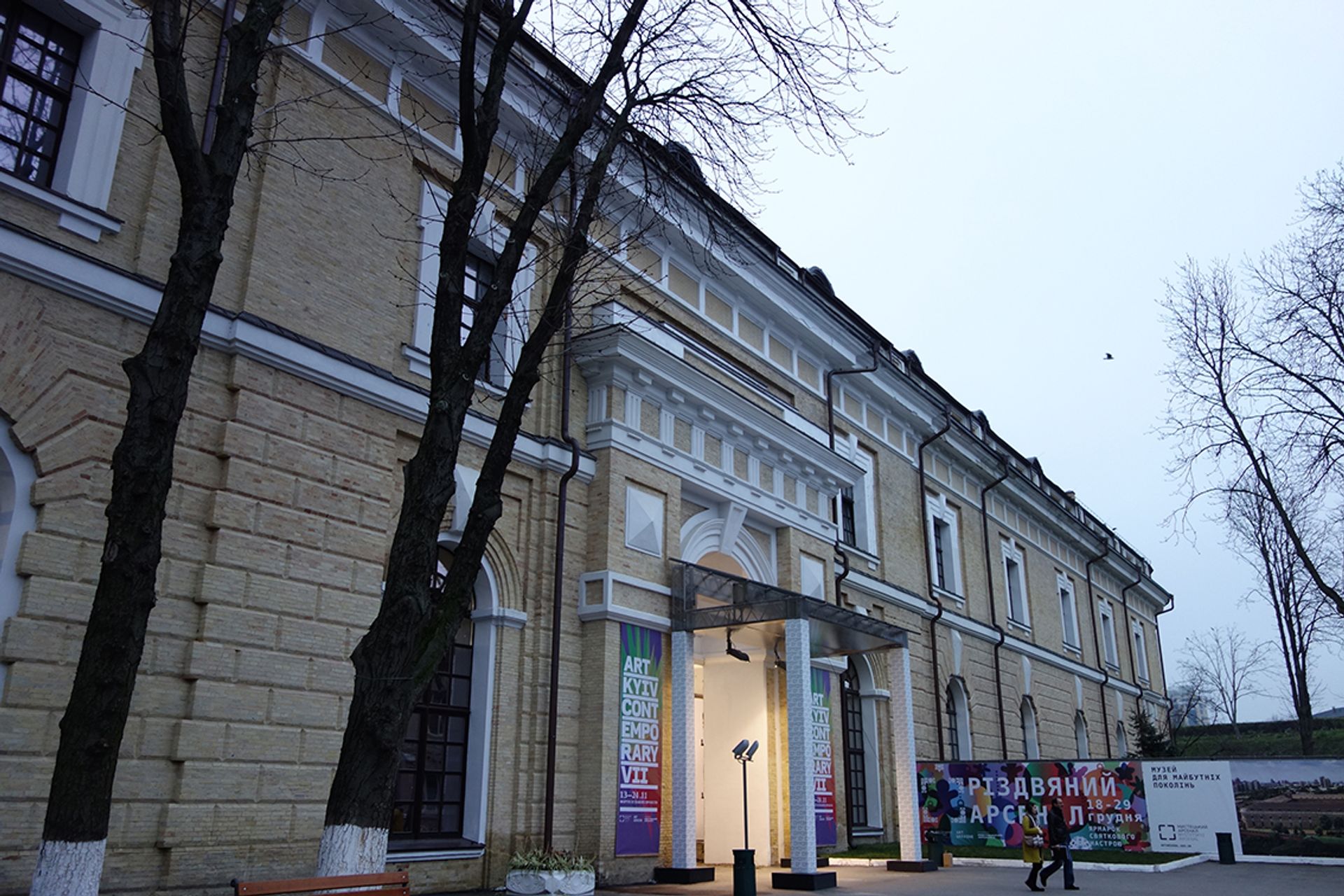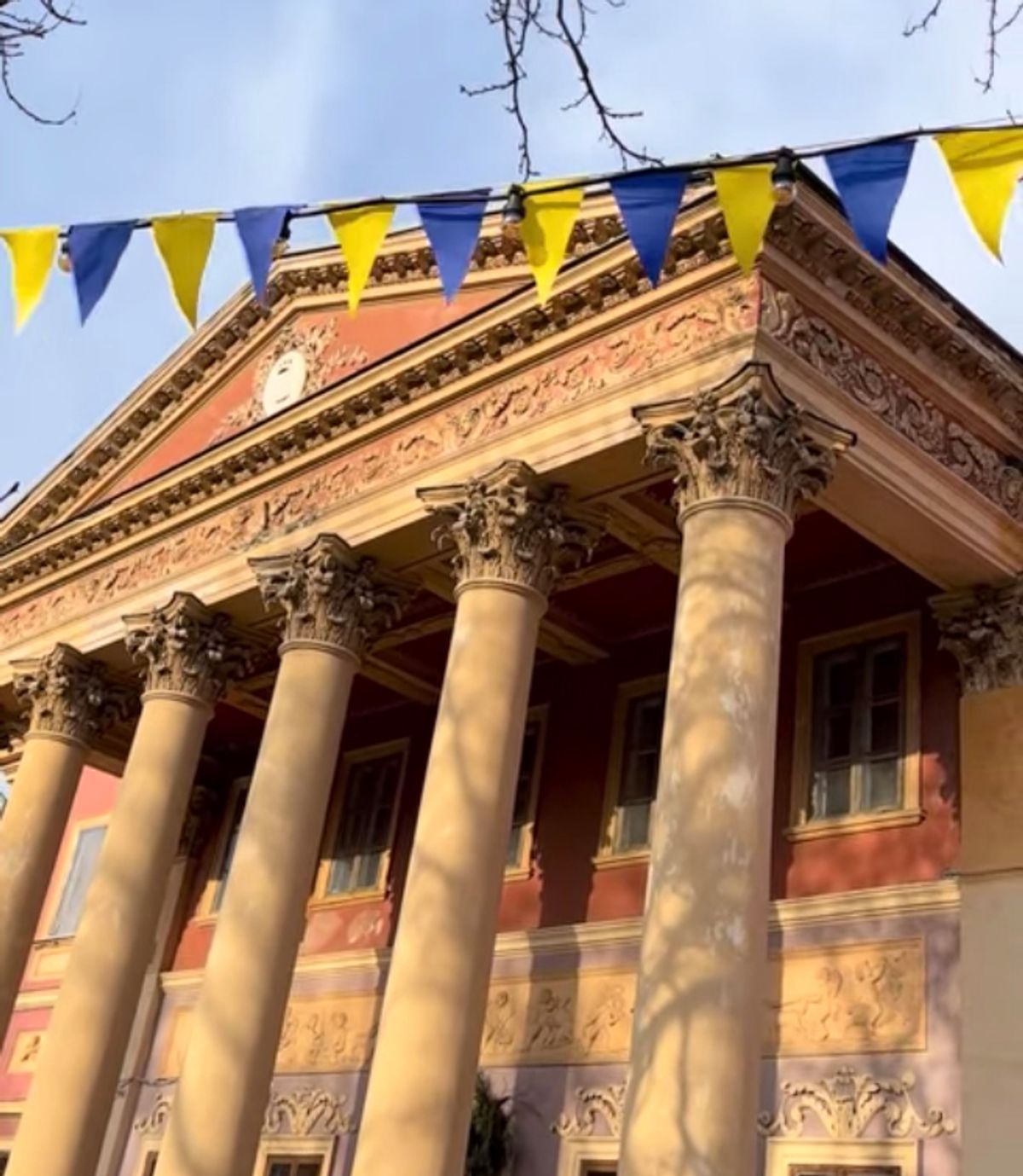As tensions with Russia continue to escalate, museum workers in Ukraine who are tasked with preserving the country’s cultural heritage are anxiously awaiting any news, with some institutions immediately near the potential frontline living in constant limbo.
The situation worsened on Thursday as the US accused Russia of lying about pulling back forces, and Ukraine accused pro-Russian separatists in eastern Ukraine of shelling a kindergarten.
In a Facebook post on Thursday, Oleksandra Kovalchuk, the acting director for the Odesa Fine Arts Museum, spelled out how the institution is dealing with the current threat, both practically and symbolically. The Black Sea port city, easily accessible for Russian naval forces, is also perilously close to Transdniestria, a pro-Russian breakaway republic of neighboring Moldova.
Although Odesa has been a highly Russian-speaking city, Kovalchuk said in her post that “the external threat is Ukrainising the Odesa art museum,” with staff rapidly switching to Ukrainian language communications. “Who knew that 150,0000 servicemen on the borders of our country would work better than the law on language?”
Kovalchuk said the museum has assessed its security systems and “closed all the gaps we noticed.” She also thanked police “for their attention to the museum and their responsibility for the safety of the museum and the collection.”
The Ukrainian flag has been added to all of the museum’s publications, its logo is now the national colours, and has been placed at the museum entrance “at least until the end of February.”
“Maybe someone now thinks that museums or art should be out of politics,” Kovalchuk writes. “With all the expertise I have, I want to assure you that this is not the case. Throughout history, art has been and still is a part of politics that is inextricably linked to public life.”
Kovalchuk, who was elected as a member of Odesa’s city council in 2020, also emphasised the role of art in calming people’s nerves and said museum entry would be free on Sunday 20 February to help “combat stress".
Sergiy Lebedynskyy, the head of the Museum of the Kharkiv School of Photography, told The Art Newspaper by email on Wednesday: “We still can't believe that something like this is happening in Europe. It's very sad and worrying.” The museum, which launched in 2018, presents seminal Soviet-era photographers based in the region, including internationally renowned Boris Mikhailov. In 2021 the museum was among donors of contemporary Ukrainian art to the Centre Pompidou.
“Kharkiv, the second largest city in Ukraine, is situated only 40km from the Russian border. In case of invasion there will not be any chance to quickly evacuate the city as unfortunately the intercity roadway system is not well prepared and would quickly collapse in case of such events of mass evacuation,” Lebedynskyy said.
Since the museum’s archive facilities are not yet finished, “a big part of the collection is kept in storage in Germany, which is good at this time,” while the works in Ukraine “can be evacuated in a couple of vans,” he says.
“Just yesterday we finished the installation of the lighting system for the exhibition space,” he said. “It's kind of weird to work on future plans knowing everything could come crashing down at any moment.”
Olesia Ostrovska-Liuta, the director general of the Mystetskyi Arsenal National Culture, Arts and Museum Complex, in Kyiv, Ukraine’s capital, located in a historic building near the Kyiv-Pechersk Lavra, a Unesco World Heritage site says: “There are multiple threats, and we do not know which one will be realised: starting from a blackout or lack of internet connection to a full-scale invasion. So we try to prepare for as many scenarios as possible.”
Ostrovska-Liuta says her team “will act in accordance with the ICCROM [International Centre for the Study of the Preservation and Restoration of Cultural Property] recommendations and our own subsequent emergency plans.” At the same time, “if none of these threats materialise for now” Mystetskyi Arsenal is prepared “to carry on our programme activities through the year as well.” Among forthcoming events is a Zoom presentation of a catalogue for an exhibition of Belarusian contemporary art; a country which is “under the worst pressure of a dictatorship in our region,” she says. Many Belarusian cultural figures have taken refuge in Ukraine from the threat of arrest by the regime of Aleksandr Lukashenko.
In a sentiment that many museum workers around the world will appreciate, Ostrovska-Liuta says that “there is a sad joke on the Ukrainian cultural scene that nothing is as therapeutic these days as writing a grant proposal.”

Mystetskyi Arsenal National Culture, Arts and Museum Complex in Kiev
Culture has been caught in the crossfire since 2014 when Russia annexed the Crimean Peninsula in the Black Sea, which set off an international museum standoff and court battle over Scythian artefacts that were on loan to the Allard Pierson Museum in Amsterdam. The case is currently headed to the Supreme Court of the Netherlands in The Hague.
Russia’s actions in 2014 were triggered by the Maidan Revolution in February of that year, which toppled then president Viktor Yanukovych, who fled to Russia, and saw hundreds of monuments to Vladimir Lenin being toppled around the country as Ukraine sought to free itself from symbols of Soviet oppression.
Pro-Russian separatist forces occupied eastern Ukraine in June 2014 after intense fighting against Ukrainian government troops and volunteers, with numerous clashes since then. The rebels are also accused of shooting down Malaysian Airlines flight MH17, which was en route from Amsterdam to Kuala Lumpur, an allegation which Russia denies.
The occupation led to attacks on cultural institutions and an exodus of art workers. Olena Pekh, a museum researcher, was captured by separatist rebels in 2018 and accused of espionage. Lyudmyla Denisova, the Ukrainian parliament’s commissioner for human rights reported in December 2021 that Pekh is in critical condition in a separatist prison following prolonged torture.
Russian President Vladimir Putin, in a much-discussed article last July, made it clear that he regards Ukraine as one nation with Russia. He also wrote that “under the guise of combating the so-called Russian great-power chauvinism, Ukrainisation was often imposed on those who did not see themselves as Ukrainians.” Russian media accuses Ukraine of fascist tendencies.
Ukraine’s government, with support from the private sector, has been pushing to strengthen Ukrainian culture at home and promote it abroad. The Ukrainian Institute promotes international cultural diplomacy, including in the visual arts. It launched Ukraine Cultural Diplomacy month on Thursday, with the motto “Ukraine Everywhere.” The Ukrainian Institute London is holding lectures and readings.
In a Facebook post on Wednesday, which Ukraine marked as Unity Day, Oleksandr Tkachenko, Ukraine’s minister of culture, said: “Everything will be culture! Everything will be Ukraine.”


